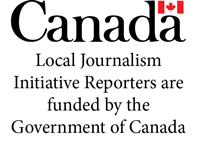Similar to those in many different homes across the country, my husband and I have been discussing the many news articles associated with the “Freedom Convoy.”
Typically, this is not the type of thing that I would write a column about, and I’m not planning to delve too deeply into the matter, however, I feel that it has unusually impacted my family. One that we didn’t expect when we initially heard the news.
Both my husband and I are soccer fans, and both the men’s and women’s Canadian teams are doing particularly well this season. We have found ourselves breaking out our Team Canada jerseys, hats, mitts, sweaters, and flags. It is almost embarrassing the amount of Canada swag we have between the two of us.
What can I say, we are patriotic people.
My husband recently commented that he would typically be flying Canadian flags on his truck in support of our Canadian men’s team on their way to the World Cup. However, this year, he has abstained so as to not be connected to the convoy.
This comment made me think how strange it is that a flag can be a symbol for so many different causes.
For example, a flag lowered is a sign of mourning, yet carrying the flag at an event like the Olympics is among the greatest of honours.
The same symbol is used in extreme sadness and happiness.
The federal government’s website states that a Canadian flag shall not be flown upside down, however in the event of extreme danger it is permitted.
I’m not going to lie, the first time I read the etiquette for our national flag was while I was writing this column.
I realize I don’t know as much as I ought to.
This revelation gave me the desire to learn about the history of the Canadian flag as well.
As many know Canada did not have its current flag until 1965. But the reasoning for the change to this flag was what surprised me.
Apparently, there were many reasons why Canada desired a new national symbol. Some included the desire to flaunt our independence, and to accurately represent Canada’s values.
Two unsuccessful attempts to change the flag were made in 1925 and 1946. Perhaps the final nail in the coffin of the former Canadian Red Ensign was during a peacekeeping operation in Egypt.
Canadian troops were sent to Egypt in 1956 as United Nations Peacekeepers during the Suez Crisis – the invasion of Egypt by Israel, France and the United Kingdom.
During this mission, the Canadian troops flew the Canadian Red Ensign, which as you may or may not know, incorporates the Union Jack – United Kingdom’s flag.
It is said that Egyptian observers thought Canada was flying the flag of an invading nation. This no doubt caused confusion and did not help the Canadian troops while they attempted their peacekeeping mission.
In 1963, Lestor B. Pearson was elected as prime minister and declared he would solve what he called “the flag problem.”
Pearson was the Canadian Secretary of External Affairs during the Suez Crisis and advocated for the UN peacekeeping missing which Canada participated in. An act that landed him a Nobel Peace Prize.
Pearson gave his recommendation of what the new flag should look like (a sprig of three red maple leaves, on a white background bordered by 2 blue stripes), however, it was strongly opposed by parliament in 1964.
Instead, a committee was created and given a six-week deadline to submit a recommendation for a new national flag.
Debate within the committee was said to be fierce, however, the committee eventually narrowed it down to the design of our current flag.
The desire was proposed by George Stanley, Dean of Arts at the Royal Military College (RMC) in Kingston, Ont. On Oct. 22, 1964, the committee voted in favour of Stanley’s design. Two months later the House of Commons approved, followed shortly after by the Senate.
The Maple Leaf flag was made official by a proclamation from Queen Elizabeth II on Jan. 28, 1965. On Feb. 15, it was inaugurated in a public ceremony on Parliament Hill.
“May the land over which this new flag flies remain united in freedom and justice… sensitive, tolerant and compassionate towards all,” Prime Minister Pearson said at the ceremony.
I find that quote particularly resonating as 57 years later, nearly to the day, this flag is being used alongside others that represent the polar opposite of what it was intended for. Once again, the symbol that is our national flag is a confusing topic of international interest.
I find solace in knowing that Canada has moved past other confusing times and emerged with the reputation of kindness and acceptance.
Canada has many sore spots in its history, and sometimes it seems like new ones are emerging every day, but if we carry on with the intent to do better – and be better – I don’t see how we can do any less than that.
***
Kelsey Bent is a Midwestern Newspapers reporter/photographer. She can be reached for comment by emailing kbent@midwesternnewspapers.com.


